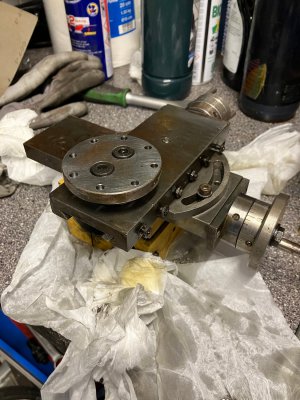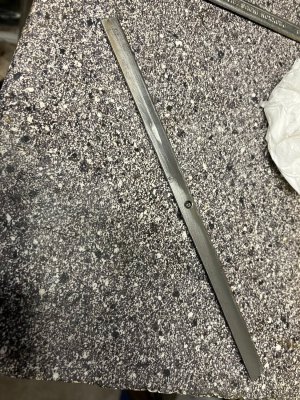- Joined
- Oct 7, 2024
- Messages
- 19
The reason your chuck does not match the instructions is this was arguably and upgraded chuck, a Bison.
The factory chuck on most that Ive seen was an AMA, and were quite good, though you also have the more desirable cast aluminum base the earlier machines had, so your machine may have come with the bison before they went to AMA?
My chuck.
From what I've been able to find out the 1981 ones all came with this Polish made PUTm chuck. Here's a picture of it before cleaning. Apart from the dirt and stains, it is actually in decent condition.

I didn't take it fully apart, only took the jaws out and oiled everything, but you're right, I should.
The manual I downloaded says it's a split pin. The end parts that enters the collar are broken off and one was missing, but I still have the remains. It doesn't seem to have been a taper pin, but there is some kind of split in it. I'll keep an eye on it, for now the 3mm steel rod I inserted seems to stay put.As to the pin you mentioned, check the fit on both sides of the collar as I believe mine was a taper pin.
Even with all the rust, after oiling it's smooth like knife-in-butterThe Rohm drill chucks are very nice In my opinion. Mine also came with one but of a slightly different (Cheaper?) build.
The handwheels are quite spartan in stock form, so on mine I remade the spindles with reduced shanks in order to fit brass revolving handles to them.
That's a nice modification, you've made there! Thanks for inspiration


